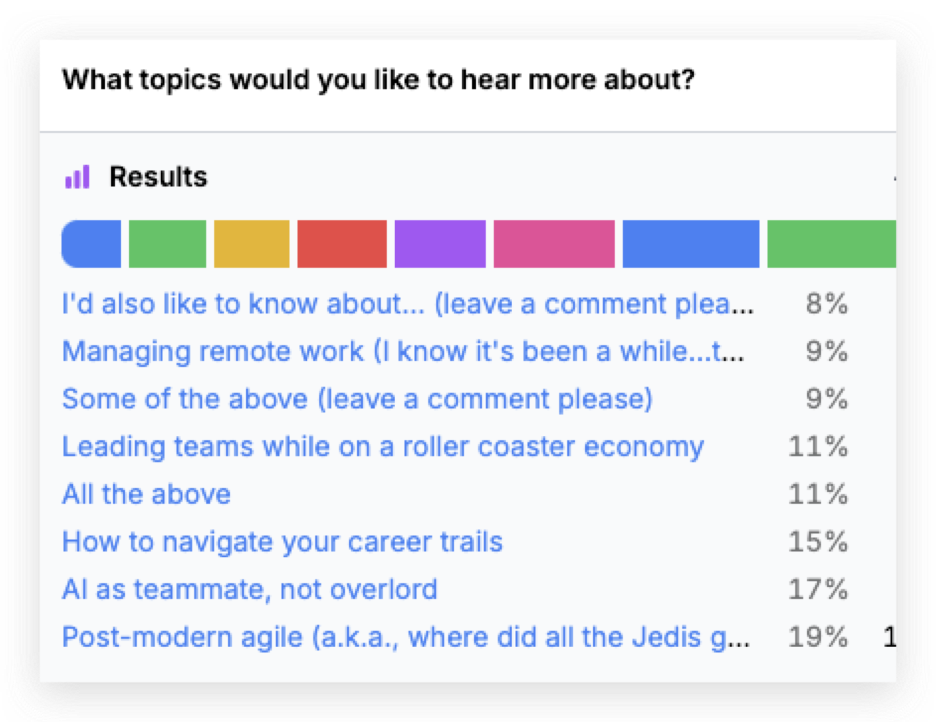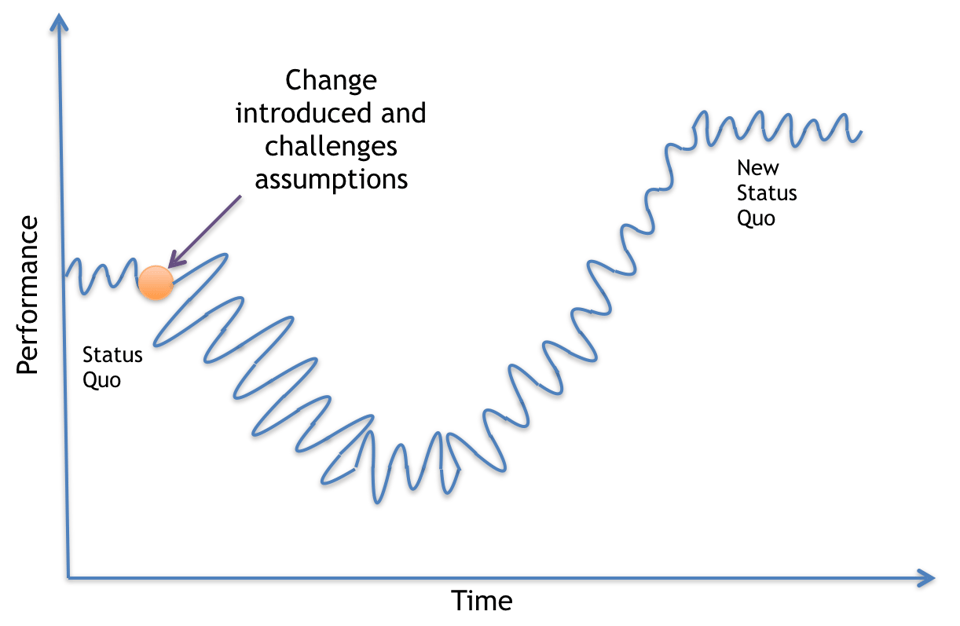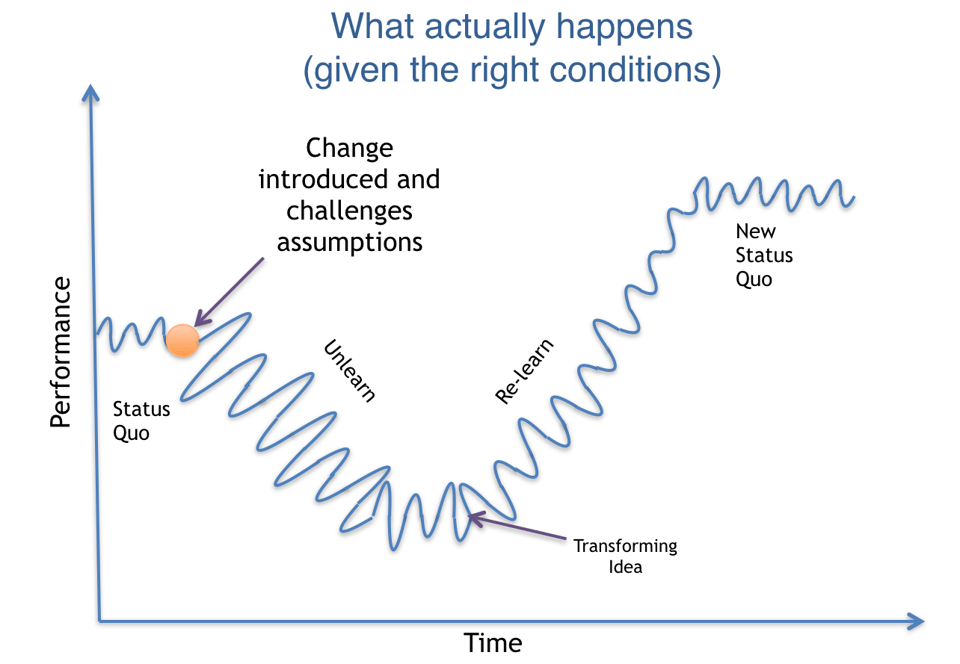Riding Waves of Change
Recently, a colleague of mine — Dahlia — announced that she was taking a one-week break from social media. I’m wondering what prompted this break. I wondered if a week would be enough time.
Do we need to consider what changes are impacting us, how they are impacting us and why? Can we plan different impacts than what we are experiencing?
What about you? A little over a week ago, I sent out a survey asking what topics you may be wrestling with. Thanks to those who responded. Here is a summary of the results.

As I reviewed how the results spread out, I realized we all may be dealing with too much change — whether it’s the fading demand for agile approaches, the push for AI everywhere, or the volatility of the job market.
I find it helps to visualize the problem first.
The Look of Change
When individuals, teams or organizations navigate change, we can see a shape to the change. It tends to look like the following image.

Most people who guide change know this as the J-curve. The key is to realize that the change introduced challenges to some assumptions. We can’t perform the way we always have because the change requires us to work a different way. Also, nothing guarantees that we will end up at a higher level of performance, as this image shows.
For instance, it’s impossible these days not to read or hear about AI and how it can improve your work. But what if you’ve not seen examples similar to the way you work? What if you can’t figure out what to type into that prompt window to say “make my work better”?
We need to look more closely at this J-curve. The way to reach that higher level of performance and adapt to the change successfully relies on having the time to reflect on what assumptions have been challenged, what assumptions you might need to let go of (unlearn), and realize that alternatives may exist to perform differently (relearn).

But you can’t get to relearning without that transforming idea that helps you learn to apply the new knowledge.
Extending our AI example, maybe you hear that AI can help with repetitive and tedious work (transforming idea). That makes me recall tedious reporting efforts, like expense reports. What experiment could I run? Could I upload receipts and mileage to a large language model (LLM) and ask it to generate an expense report for me? Does it work? Does it generate a correct expense report? What did it save me?
Finding a transforming idea and trying an experiment to apply to your current work, and measuring our results, becomes the relearning. If we’re successful, we try other experiments and perhaps other transforming ideas.
Next time, we’ll talk about how this works when you are dealing with too much change. For now, I’m reaching out to Dahlia to see what change she’s trying to navigate.
Stay human my friends,
Mark
Footnotes:
If you struggle with how to use AI in your work and are looking for more transforming ideas, join Melissa Francis and I for our free webinar very soon.
Wondering how you apply the J-Curve personally? Dave Prior and I will be discussing this and more in our Productivity Survival course starting October 16. Readers of this newsletter can use code MarksMarv75 for a discounted price of $124.
Wondering how to deal with the changing career landscape? Join me online at the Engineering Leadership Summit (Friday, October 24) or live at AgileDC on Monday, Oct 27. You can grab a ticket for just $160 By using the "speaker referral" discount code AgileDC15 on the AgileDC ticket registration site.
Add a comment: